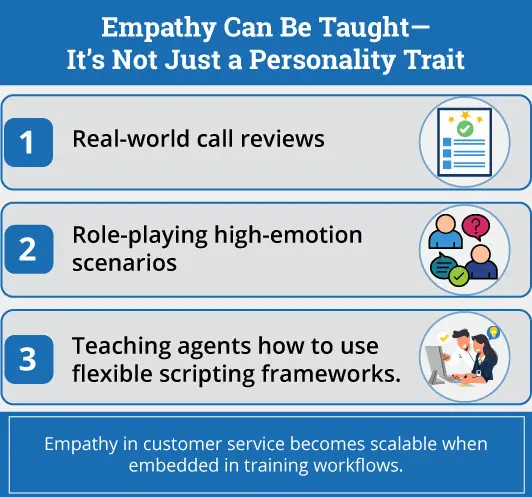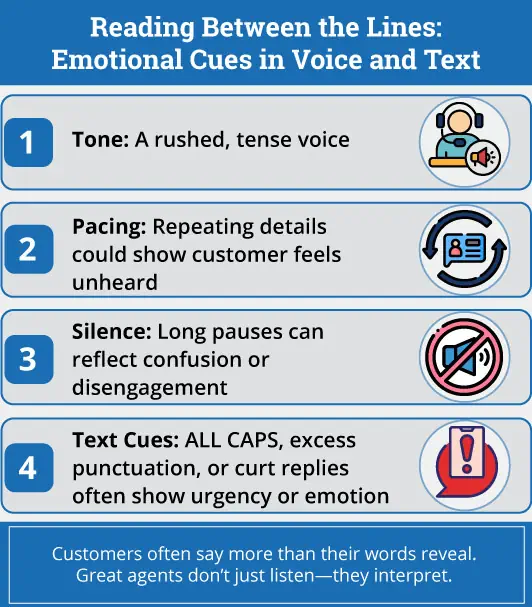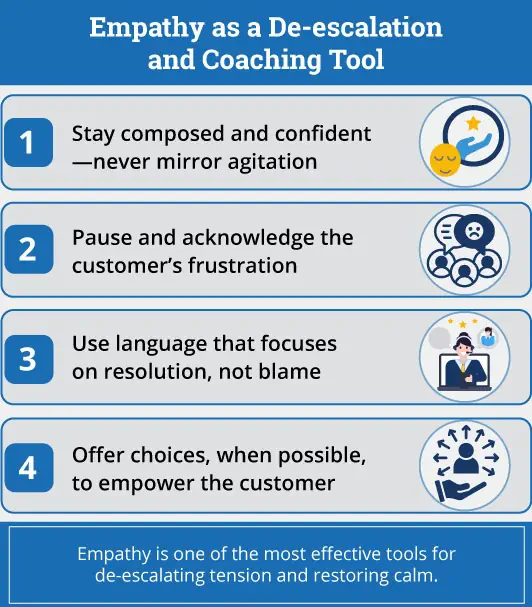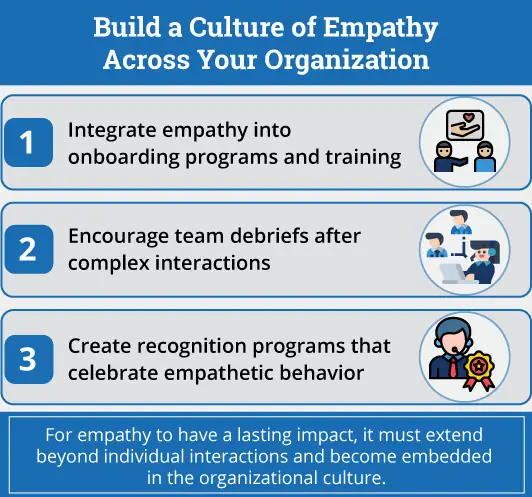Empathy has long been considered a soft skill—a nice-to-have rather than a business imperative. But in today’s customer experience (CX) landscape, empathy is emerging as a powerful, result-driven strategy. Contact centers that prioritize empathy not only improve their service quality but also drive measurable business outcomes, from increased customer loyalty to improved First Call Resolution (FCR) and reduced churn.
Customers today are not simply seeking quick solutions. They want to be understood, respected, and valued. Emotional connection is the new currency of customer loyalty. Brands that respond to this shift by building empathetic customer service strategies set themselves apart in an increasingly digital and impersonal world.
At SQM Group, we’ve spent decades analyzing what makes customer service truly exceptional. Our research and experience show that empathy is one of the strongest drivers of customer satisfaction and agent engagement.
In this blog, we explore how empathy enhances agent performance, strengthens customer relationships, and delivers tangible business results. We’ll examine how empathy can be trained, how it functions as a de-escalation tool, and why it must be embedded into company culture to make a lasting impact.
Why Does Empathy Matter in Customer Experience?
Empathetic interactions improve satisfaction because they acknowledge the customer’s emotions and reflect a genuine desire to help. Empathy drives loyalty by fostering trust, which in turn encourages customers to continue doing business with your brand. Moreover, empathetic experiences lead to more positive word-of-mouth, including online reviews and referrals.
Empathy also plays a crucial role in First Call Resolution (FCR). When agents approach interactions with empathy, they ask better questions, listen more attentively, and uncover the root of the customer’s issue. This leads to more accurate resolutions and fewer repeat contacts—enhancing operational efficiency and customer experience simultaneously. These are essential components of modern customer retention strategies.
Let’s explore the top ways empathy can transform your customer service strategy and create lasting impact across your organization.
1. Empathy Can Be Taught—It's Not Just a Personality Trait
While some individuals naturally exhibit empathetic behavior, empathy is not an innate trait reserved for a few. It is a skill that can be developed through intentional training and practice. Contact centers that implement empathy training programs often see marked improvements in agent communication, customer outcomes, and team morale.
Empathy in customer service becomes scalable when embedded in training workflows.
Effective programs include:
- real-world call reviews
- role-playing high-emotion scenarios
- teaching agents how to use flexible scripting frameworks.
These approaches help agents move beyond transactional responses and adopt communication styles that prioritize customer understanding and connection.
Providing regular feedback loops that focus on tone, pacing, and phrasing further reinforces empathetic behaviors. Recognizing and rewarding empathy in performance reviews and QA scores helps embed it as a core competency. With consistent coaching and reinforcement, empathy becomes a natural and scalable part of the agent skill set, supported by call center coaching and empathy in training for customer service.

2. Reading Between the Lines: Emotional Cues in Voice and Text
In voice and digital channels, customers often communicate more than what they say outright. Great agents don’t just listen — they interpret. Whether over the phone or in a live chat, subtle emotional cues are often more telling than words.
Identifying Emotional Signals:
- Tone: A rushed, tense voice may signal frustration
- Pacing: Repeating details could mean the customer feels unheard
- Silence: Long pauses may reflect confusion or disengagement
- Text cues: ALL CAPS, punctuation, or curt responses in chat often indicate urgency
Empathy in customer service channels is most effective when supported by training that helps agents decode emotional cues. This level of awareness is essential in delivering consistent, empathetic experiences across all customer service channels. It helps prevent miscommunication and reinforces the customer’s perception that the brand genuinely cares about resolving their issue. Agents who develop active listening skills and emotional intelligence in customer service are better equipped to provide lasting value.

3. Empathy as a De-escalation and Coaching Tool
Conflict is an inevitable part of customer service. How agents respond to difficult situations often determines whether the interaction ends in frustration or satisfaction. Empathy is one of the most effective tools for de-escalating tension and restoring calm.
Conflict Resolution Techniques Using Empathy:
- Stay composed and confident — never mirror agitation
- Pause and acknowledge the customer’s frustration
- Use language that focuses on resolution, not blame
- Offer choices, when possible, to empower the customer
Using empathy as part of your customer service de-escalation techniques leads to faster conflict resolution, reduced escalation rates, and improved customer satisfaction. From a performance management perspective, empathy is also a valuable coaching tool. Supervisors can use empathy-related metrics and QA evaluations to guide feedback and support agent growth. Empathetic agents not only resolve issues more effectively but also contribute to a more positive team culture.

4. Build a Culture of Empathy Across Your Organization
For empathy to have lasting impact, it must extend beyond individual interactions and become embedded in the organizational culture. Leadership plays a critical role in modeling empathy and ensuring it is reflected in policies, training, and daily operations.
Integrating empathy into onboarding programs, coaching sessions, and performance recognition ensures it remains top-of-mind. Encouraging team debriefs after emotionally complex interactions helps agents reflect and improve. Creating recognition programs that celebrate empathetic behavior reinforces its importance at all levels of the organization.
As digital channels continue to dominate customer interactions, empathy must also evolve. In written communication, tone and clarity become even more critical. Brands should encourage agents to personalize their language, avoid robotic or overly formal phrasing, and use empathetic statements like
- “I understand how that must feel”
- “Let’s work through this together.”
These simple adjustments make a significant difference in how the customer perceives the interaction. Embedding empathy in digital-first service models ensures that consistency in experience is maintained across channels.

Make Every Interaction Count
Empathy is not a soft option—it is a strategic necessity. In today’s customer service environment, where interactions are complex and customer expectations are high, empathy equips agents to deliver outstanding experiences that build loyalty and trust.
When empathy is integrated into agent training, supported by coaching, and reinforced through culture, it becomes a powerful tool for differentiation and growth. Brands that embrace empathy are not only more likely to retain customers but also to foster advocacy and long-term value.
Every customer interaction presents an opportunity to connect on a human level. When that connection is made with empathy, the results are far-reaching.
Every conversation is a chance to connect. Make it count.

